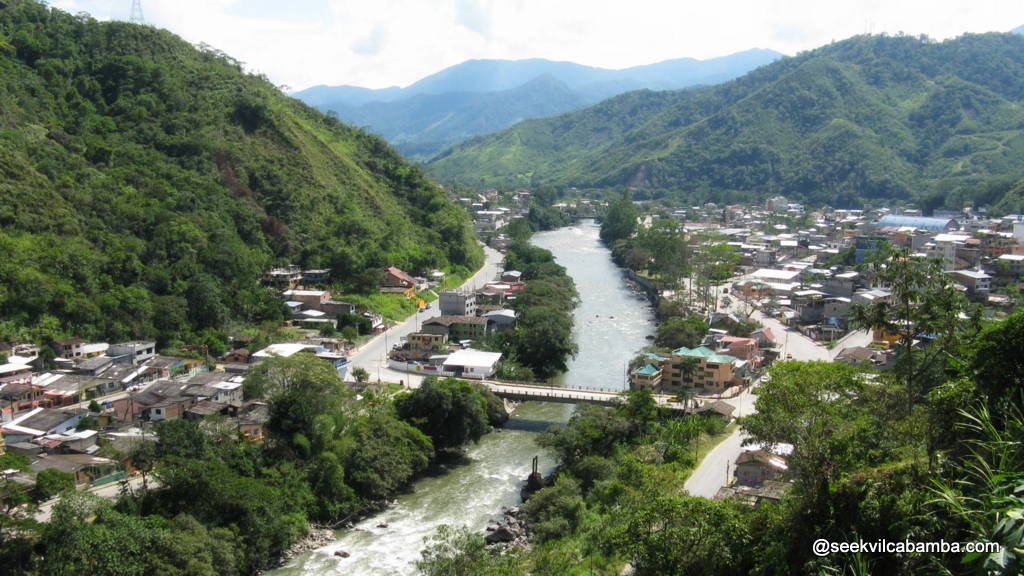
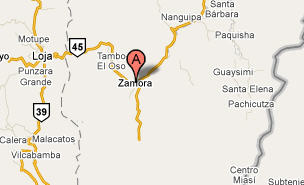
About 2 hour drive from Loja to the east in the Amazon forest lies a small and tranquil
town called Zamora. Getting there from Vilcabamba in our old Land Cruiser was quite
a trip, not because it is far in kilometers but because the road is so bad and so
twisty. You have to climb for half an hour from Loja and then go all the way down
again. At the time of this writing (July 2010) they are rebuilding the road with
concrete just like the road to Cuenca but it will take some time before it is finished.
In the mean time, watch the potholes. The last few kilometers are particularly hard
because they only allow the traffic one way at a time over a long distance and we
had have to wait half an hour each way. This is all part of the Ecuadorian experience
:-)
Parts of the road a really scenic. We particularly enjoyed the big cascade located
on the right side of the road approximately an hour drive from Loja.
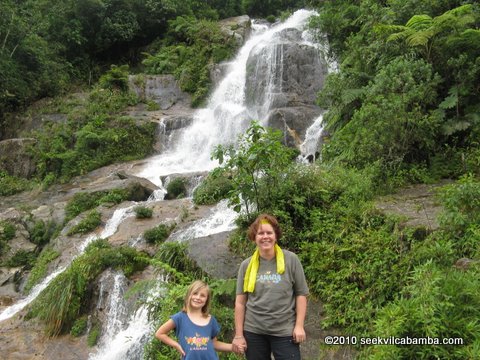
Once you get past Loja and drive downhill, as your altitude diminishes, the temperature
rises significantly and everything becomes so lush and green. It feels like another
world.
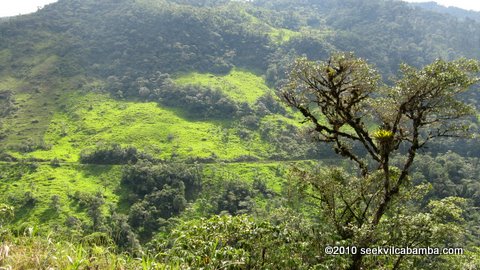
Part 1
Part 1 by Pierre Wauters
Zamora has got two things: a huge clock and a lovely central square.
The clock is quite impressive and its size can be appreciated on the photo below:
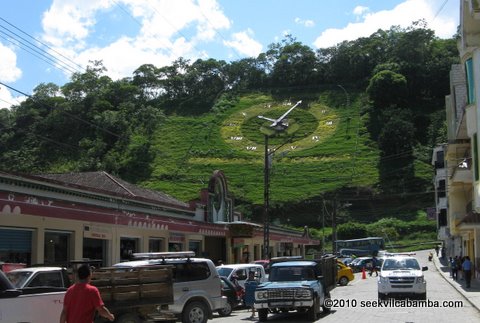
It is illuminated at night. My six year old wanted to get to the top. There is a
steep, footpath. So, up we went and here is a photo taken from the top
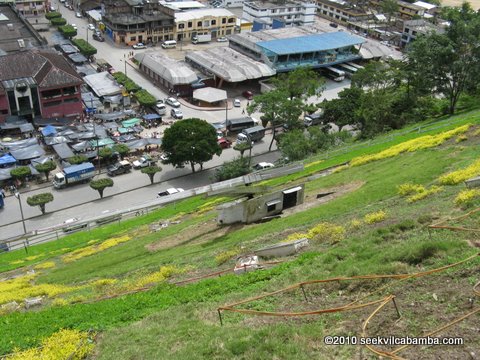
From there, one can also appreciate Zamora from above:

Believe it or not but Zamora's central park is easy to miss. One can go round and round and never see it.
The park is manicured and the church is very pretty
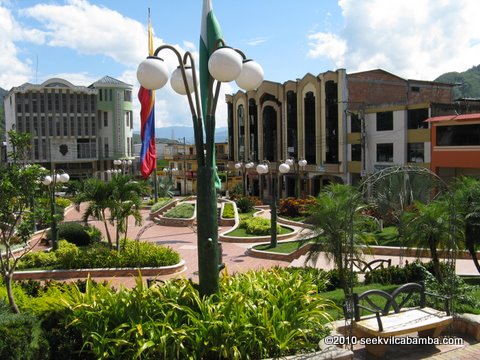
Apart from these two sites, we found Zamora itself disappointing. There are no markets
or shops worth mentioning. There is a total lack of restaurants, just a few fast
food style places serving chicken with rice but nothing, absolutely nothing else.
We were there on a Sunday night and we went down every single street (because we
were starving) looking for something. We ended up eating a bad piece of chicken
and a bad burger with sauce that tasted like pure salt.
My advice: bring your own food or get out of Zamora and get yourself some frogs
(more on that below).
From Zamora we took the road to Guadalupe which is about a 1 hour scenic drive along
the river.
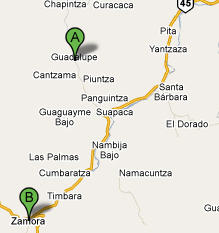
Note that along that road there seemed to be restaurants worth considering but it
was not diner time then and we did not stop.

That drive is scenic and we really enjoyed it. At one point there is a Y junction
with Yantzaza on the right and Guadalupe on the left. Guadalupe is not signposted.
From there, the road is a dirt road and at the time we were there it was rather
a "mud road".
FROGS
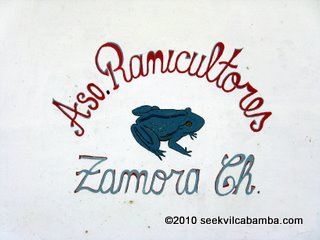
Before getting to Guadalupe, there is a small village called Cantzama. Somewhere
around there, there is a frog farm (Asociacion de Ranicultores). They sell ranas for eating.
The largest ones weigh about 1 pound each. They are very pretty with beautiful shades
of green. I have to admit that I have always had a soft spot for frogs. Below are
some photos:
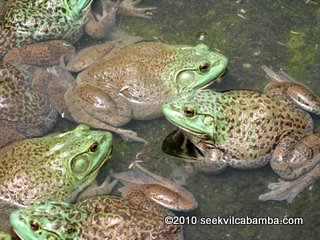
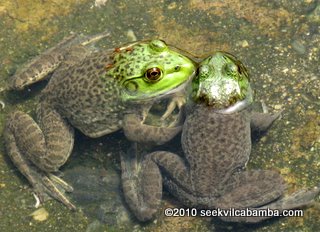
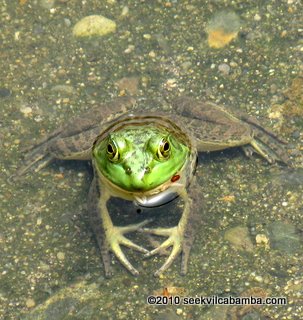
This is a business and I did not find that the animals were having a great life to say the least, packed as they were in these tiny shallow concrete ponds
with only pellets to eat. They call that food "balanciado" which means "balanced"
and that name conveys the meaning of healthy food containing everything a frog needs.
I reckon the frogs would trade that for some juicy bugs instead !

Locals eat the frogs and I tried one and it was "rico" (delicious). The protein
is lean and supposedly of very high value. It is a bit like chicken, it is a white
meat.
Warning: the following photos may offend !
I like to try things out and here was my opportunity to eat a frog. So, I bought
one for 1 dollar, gave it my love and attention for a few minutes (while thinking
to myself: "just tell me not to eat you, do something, I am a softy, things can
still be turned around if you try and show some affection or something, I might
even take you back home..." and also thinking "well, maybe it is better for you
to die here and now rather than later, what is your life worth here anyway?")
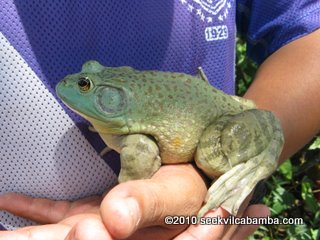
... and walked it to the nearest restaurant, making sure to hold it as they instructed
me, above the hips, squeezing enough so it can't jump but not too hard so I don't
end up with "pate de grenouiile" before I got there.
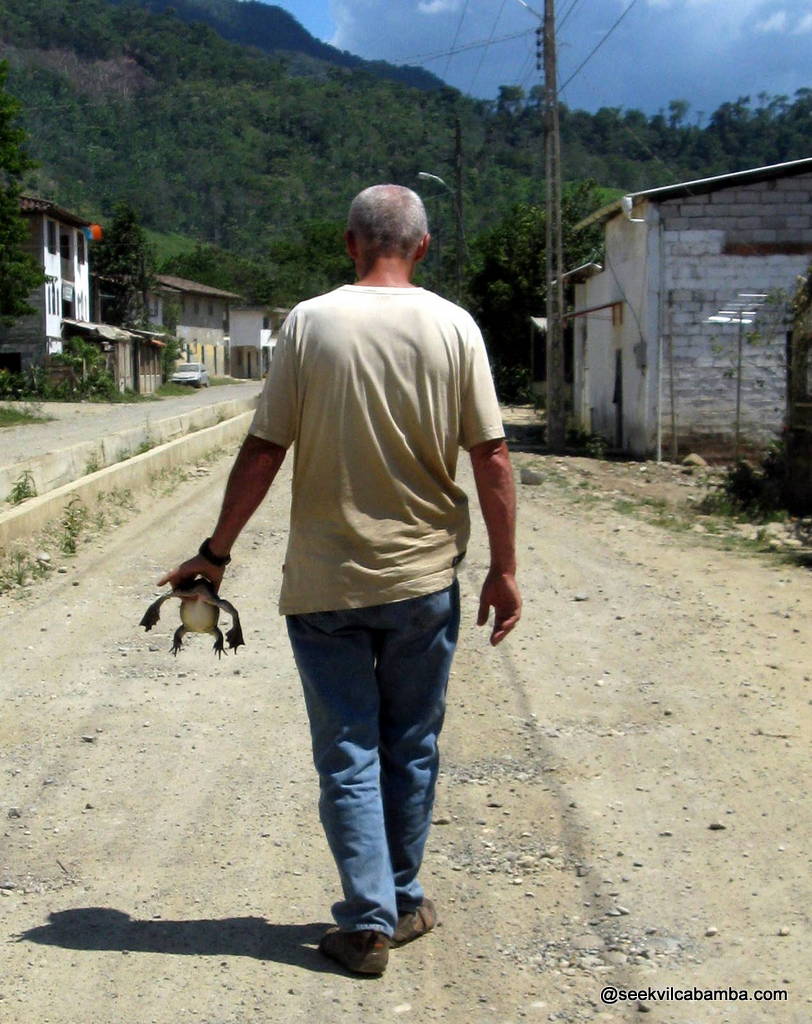
This is how things are done here. There is no way for the coward to avoid the sight
of its catch being slaughtered. You have to take it yourself alive to the butcher.
The lady took no time and in a few minutes the frog was turned into legs and breast,
ready for the frying pan
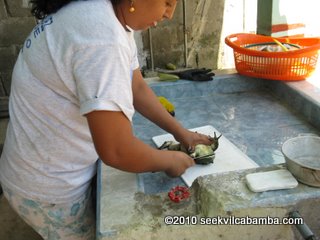

Here they prepare it like a KFC chicken with bread crumps but I would prefer to
try it myself with just garlic and butter.
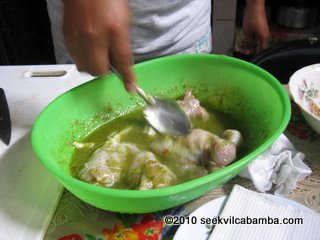
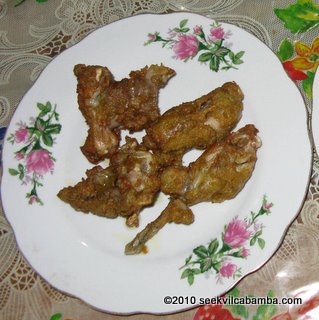
Most of these frogs are for export, guess to where? To New York city ! They are
shipped alive, in boxes. They can survive without water and food for up to 3 days.
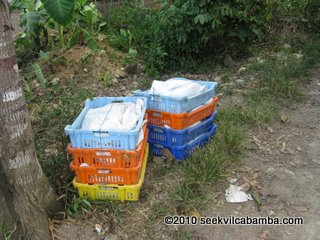
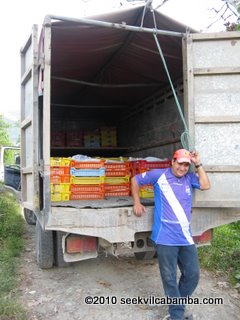
Browsing the internet, trying to figure out what type of frogs these were exactly,
I found that they were "rana toro" or "bullfrogs". Here is the link to some info in Spanish and in English. They are not native from Latin America. They
were introduced from North America and Mexico because they adapt very well to various
conditions and as such are farmed a lot. I found a PDF file about the Zamora frog export business,in Spanish.
Ecuador has a number of native frogs and some are really stunningly beautiful, some
are lethal like the "dart frog". I don't want to tun this post into a frog story
and I will leave it at that for now.
In Guadalupe, there is a catholic mission and clinic run by volunteer doctors and
nuns. One can get healthcare there for a mere few dollars. The setting is beautiful,
all clean and tidy, in sharp contrast with the villages that we had just driven
through to get there. The name of the mission is parroquia "Nuestra Senora de Guadalupe"
and they have a web site here
To be continued...